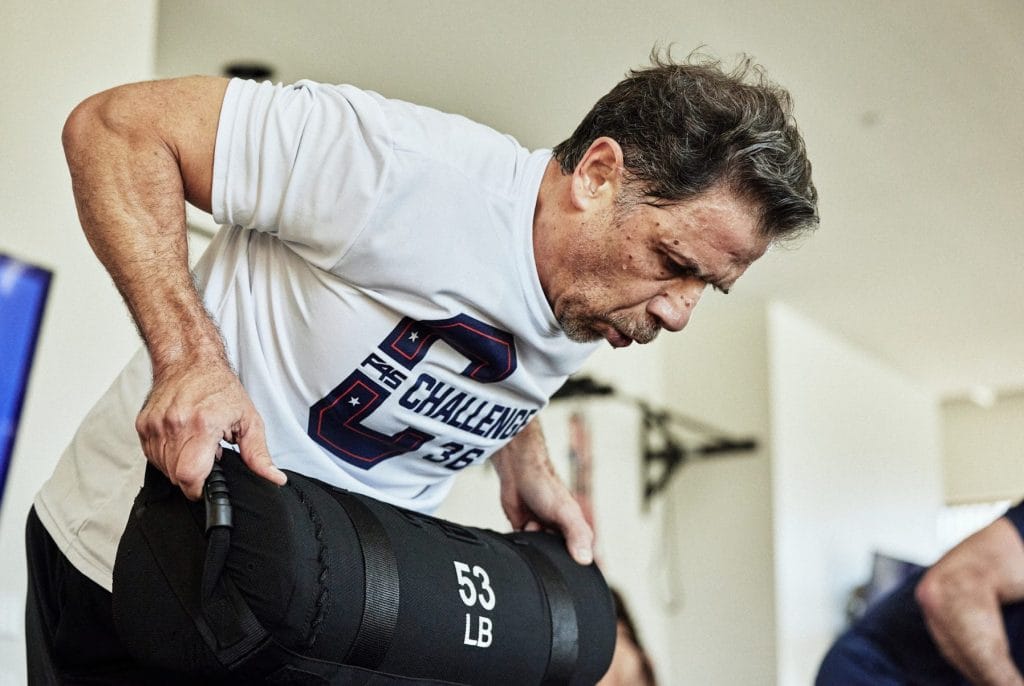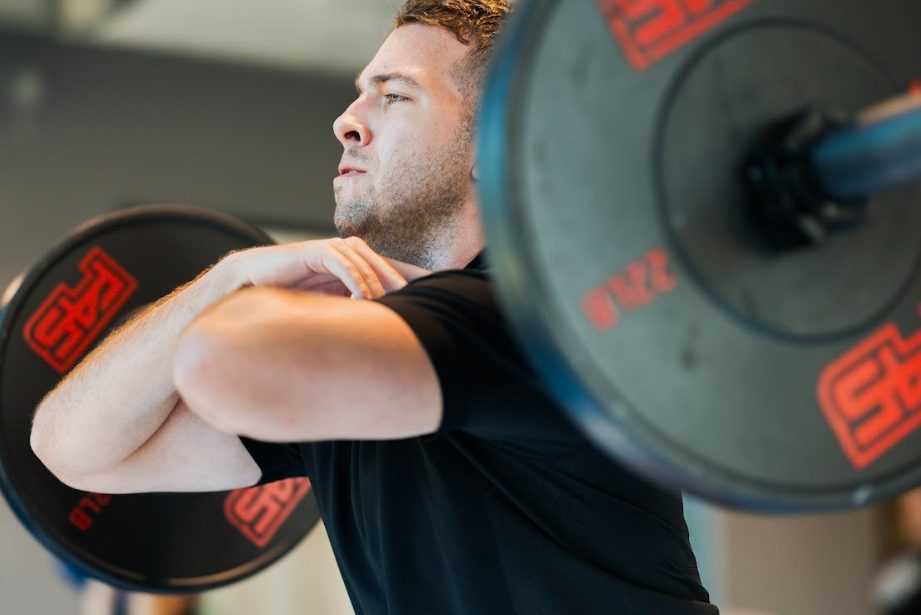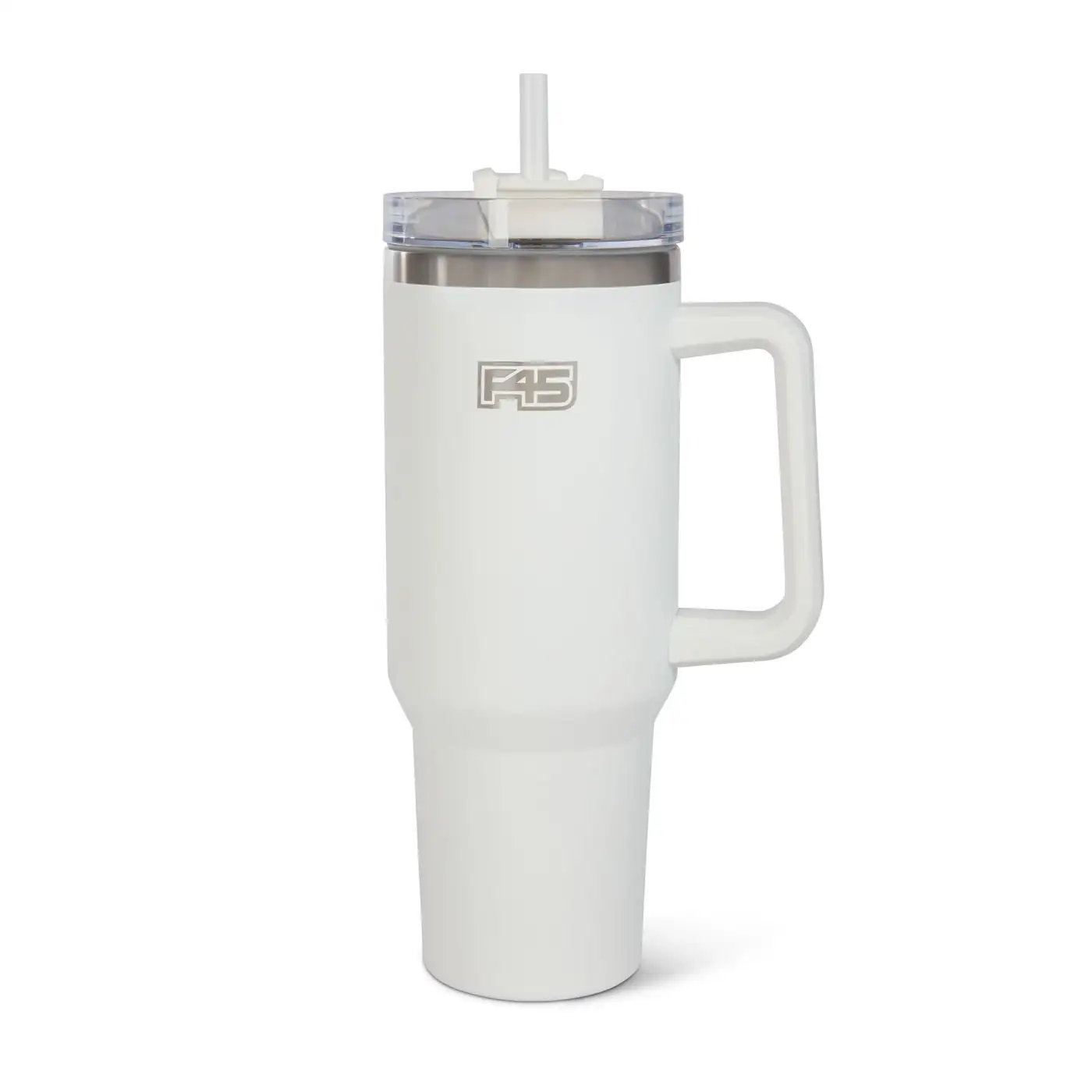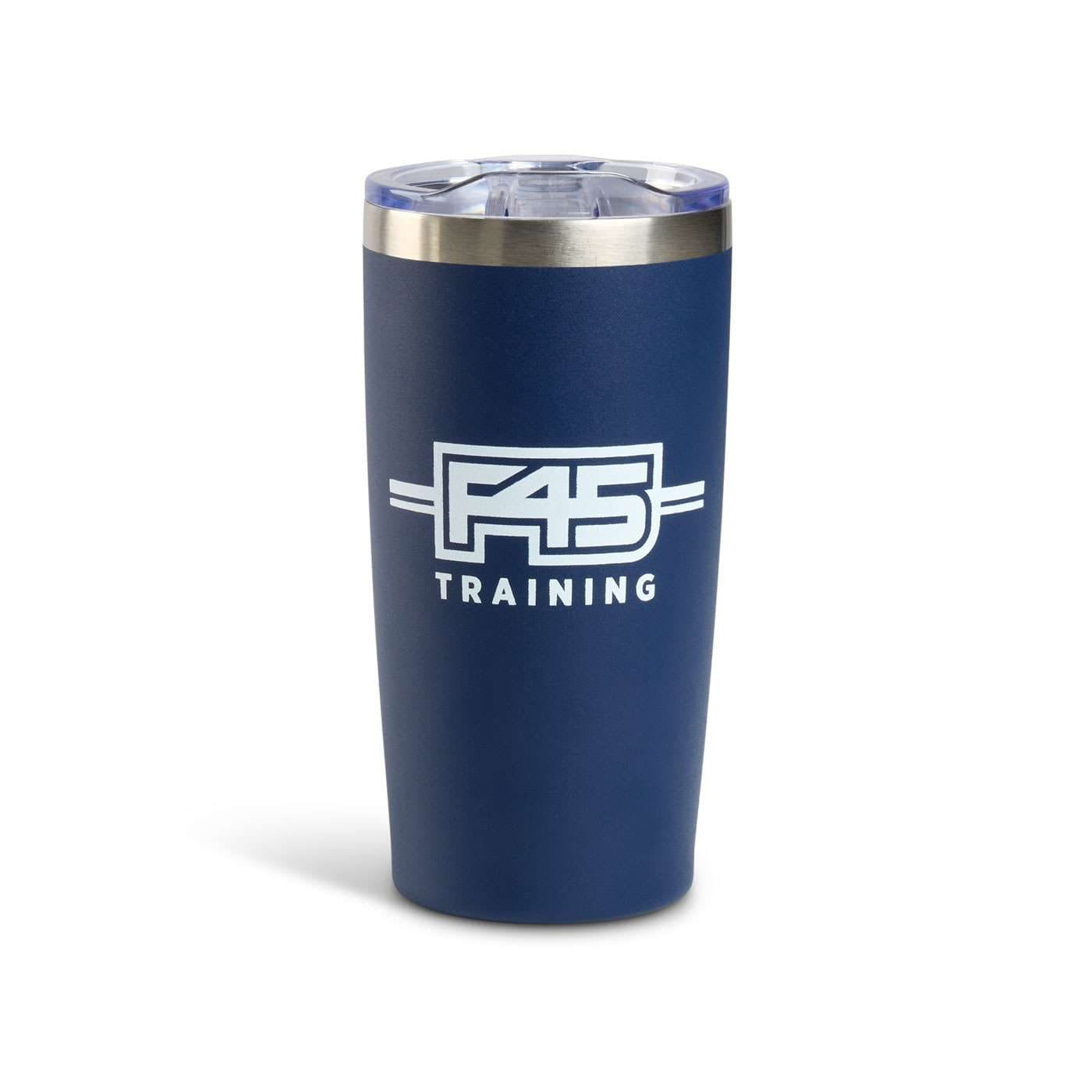Working out when you’re older is great for building muscle mass, functional strength and general health. Our bodies change with age and it’s important that exercise for seniors over 60 especially consider those changes – as well your individual experience and level of fitness.
So, what is the best workout for over 60s? The best workout routine for any age is one that’s sustainable – this means, it’s achievable, challenging and safe. At F45, we have a range of customised workouts to suit different ages and levels of experience. Below, we’ll explore what to expect when working out over 60 and the modifications that can be made to suit this age range.

How the body moves differently after 60
The process of ageing involves the natural loss of muscle strength and function – which usually presents itself in slower movement and a decreased range of motion. After the age of 30, our muscle mass decreases approximately 3-8% every decade 1 . In short, as we age, we usually:
- lose muscle mass
- lose bone density
- experience joint stiffness¹
- lose flexibility
- take longer to recover
By understanding how people can effectively exercise after 60, we can alter resistance workout exercises. This may involve reducing the actual resistance (weight), reducing the exercise motion and the intensity in which a movement is carried out.
Can you still see exercise results after 60?
Regardless of age, you can expect to see and feel the benefits of exercise after a period of consistency. Progressive resistance and strength workouts for over 60 are efficient in improving muscle mass and the amount of muscle you use when performing exercises² . For the best results, it’s recommended that older people should train 3-4 times per week, but even those who train less can expect positive
results².
F45 trainer Nicolas Wilson says, “a healthy mix of strength training, low-impact cardio, and stretching will help maintain your overall health and energy levels well throughout your 60’s. I recommend focusing on strengthening your lower body and core to help make daily activities and all exercises in the gym a bit easier.”
Beyond maintaining and building muscle, exercising after 60 can improve your general quality of life. Through consistent workouts, your functional strength and bone density can increase, risk of injury reduced when carrying out errands, along with avoiding the ‘break’ in the event of a fall³.
Workout modifications for over 60s
Exercise for seniors over 60 begins with finding a customised and sustainable fitness routine that aligns with your fitness goals. At F45, we specially curate workouts to benefit members of all ages, abilities and backgrounds. To get the best results, it’s important to live a balanced lifestyle with plenty of sleep, rest and focus on quality nutrition. There are a variety of modifications we can make to our resistance, strength, recovery or cardio workouts to maximise benefit for older people, learn about them below.
HIIT workout
HIIT workouts are effective in improving muscle strength and your body fat percentage4. Typically, HIIT workouts involve dynamic exercises such as:
- burpees
- squats
- a variety of functional core exercises.
Modification: One way of adjusting HIIT workouts for over 60s is to do standing HIIT workouts. These workouts do not involve any jumping or planking exercises. Joint stress is minimised by limiting the workout to standing exercises, e.g. sidesteps or knee raises. Small weights can be held to increase intensity.
Strength training
Many people build powerful muscles in their later years, enjoying greater mobility and functionality. Strength-based resistance training is effective for exercise after 60, as it reduces the effects of ageing by increasing your bodies muscle mass5 . Strength training usually involves using weights as resistance, popular exercise examples are:
- squats
- dead lifts
- bench press
Modification: Our first recommendation is to begin with less weight – even if you’re able to lift more. Heavier weights can put extra stress on your joints and increase the chance of muscle tears or strains. Keeping weights light with higher repetition is safer and gives you more control.
A progressive workout for over 60s doesn’t always have to increase in weight either. One way of adding more resistance without the stress of greater weights is to carry out movements at a slower pace and with more control. For example, a regular bicep curl might take 1-2 seconds, but becomes more difficult when slowed down to 4-5 seconds.
Pilates training
Pilates is a form of training that can increase muscle strength, endurance, flexibility, posture and balance. With pilates you can create an awesome exercise routine for over 60s because it’s gentler and can be easily adapted to different intensities. Common pilates movements are:
- pelvic curl
- chest lift
- back extension.
Modification: To begin with, movements can be performed slower and with less range of motion. A wall, a chair or another person can be used as support when performing standing exercises that focus on balance.
Traditional cardio
Cardio workouts provide several health benefits for older people, making your cardiovascular system more efficient and improving heart rate recovery time after exercise6 . Common cardio exercises are:
- running
- walking
- cycling
- swimming.
Modification: When taking on cardio workouts for over 60s, sticking to low moderate intensity exercises like walking, cycling and swimming are recommended. Each works to reduce stress on joints and can be adapted to different comfort levels.
Recovery sessions
When performing exercise after 60, it’s very normal to take longer to recover from a workout. The recovery time will be different for everyone. Among elderly athletes, the most common injuries are due to overuse7 . The most important thing for recovery is to listen to your body and take extra time if you need it. Ensure you are eating a healthy diet, keeping hydrated and getting plenty of sleep.
As Nicolas puts it, “if you feel stiff or sore, it’s totally fine to pivot and adjust your workout plan in order to support your needs on that specific day! Start with a light warm up to assess how your body feels and let that determine the flow and pace of your workout. As you get stronger and as certain exercises feel easier, feel free to increase your pace, weight, or workout time to keep challenging yourself in a safe and engaging way!”
Modification: A massage or light active recovery in the pool can help reduce muscle soreness8 .It’s also worth joining an active recovery session held by an expert trainer at F45.
Maintaining a healthy heart alongside exercise after 60
As you get older, developing and maintaining an exercise routine – then customising that to your unique fitness needs – is vital. However, it’s also important that you listen to your body, prioritise your health, and do everything you can when you’re not working out to take care of yourself.
This is particularly crucial when it comes to your cardiovascular health. As we touched on above, cardio exercise after 60 offers several benefits for your heart health: and some of the benefits of aerobic exercise include reducing your heart rate recovery time after exercise and boosting your cardiovascular system’s efficiency. HIIT workouts have also been shown to produce similar – or greater – improvements in blood sugar and blood pressure compared to exercises of a more moderate intensity9.
However, it’s also important to acknowledge that certain types of exercise (high- intensity workouts for over 60s, for example) will place extra demands on your body – which mean it’s extra important to look after your heart health as part of your fitness regime.
Here are our quick fire tips for staying heart-healthy:
- Eat a heart-friendly diet that includes fibre, healthy fats, and phytonutrients
(plant-based meals involving beans, vegetables, and fruit are great for these) - Limit takeaways or meals heavy in saturated fat and salt
- See your doctor regularly for a heart checkup
- Monitor your blood cholesterol levels – and your blood pressure – regularly
- Avoid smoking and drinking to excess
Now that you’ve discovered how to customise exercise for seniors over 60, discover how to modify exercises for knee pain.
1 https://www.ncbi.nlm.nih.gov/pmc/articles/PMC2804956/
2 https://www.ncbi.nlm.nih.gov/pmc/articles/PMC3117172/
3 https://www.ncbi.nlm.nih.gov/pmc/articles/PMC6323511/
4 https://health.ucdavis.edu/sports-medicine/resources/body-fat
5 https://www.ncbi.nlm.nih.gov/pmc/articles/PMC9339797/
6 https://www.ncbi.nlm.nih.gov/pmc/articles/PMC3929838/
7 https://pubmed.ncbi.nlm.nih.gov/2816560/
8 https://www.ncbi.nlm.nih.gov/pmc/articles/PMC5932411/
9 https://www.health.harvard.edu/exercise-and-fitness/high-intensity-exercise-and-your-heart














